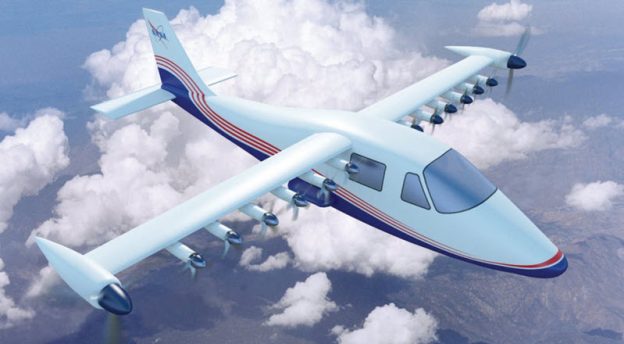Cosmic Aerospace (Cosmic), a US-European aerospace startup, has raised $4.5 million in seed financing to accelerate the development of the world’s first electric aircraft capable of flying up to 1,000 kilometers (more than 600 miles), representing a step change in range among current electric aircraft offerings.
Instead of relying on future battery improvements, Cosmic is focusing its engineering efforts on the development of a highly efficient airframe and propulsion system, unlocking flight ranges that elevate electric aircraft from a niche product into the mainstream aviation market.
The company has already built and tested a full-scale operational electric engine in record time. The new funds will boost the development of Cosmic’s unique embedded wing design, a key enabler for achieving the breakthrough energy efficiency that the company is targeting. The first full-scale flight demonstrator is on track for its first flight in 2026, with entry into service targeted at the end of the decade.
Christopher Chahine, co-founder and CEO of Cosmic, asserts that the technology exists to build long-range electric aircraft, but needs to be developed into a commercial product that is certifiable in current and future regulatory frameworks.
The seed round was led by climate tech-focused venture capital firm Pale Blue Dot with participation from deep tech and fellow climate tech investors including Aera VC, Visionaries Club TOMORROW, Fifty Years, Possible Ventures, Syndicate One, Course Corrected, Understorey Capital and Samurai Incubate.
“We are incredibly impressed by the pragmatic development approach the team at Cosmic has demonstrated and are convinced that this is the right way forward to enable a truly meaningful decarbonization of aviation. We are excited to back Cosmic and believe the team has what it takes to lead the aviation industry into a sustainable future”, said Joel Larsson, General Partner at Pale Blue Dot.
Cosmic is in conversation with various airlines and other key stakeholders across the aviation industry. The team brings a unique blend of experiences across technology, industry, and certification, which puts them in an exceptional position to lead the transition toward sustainable electric aviation. Source: ‚Cosmicaerospace‚.




